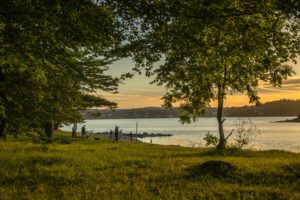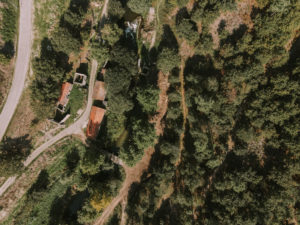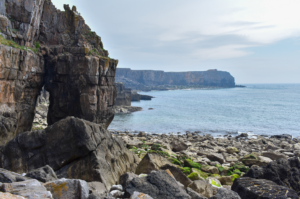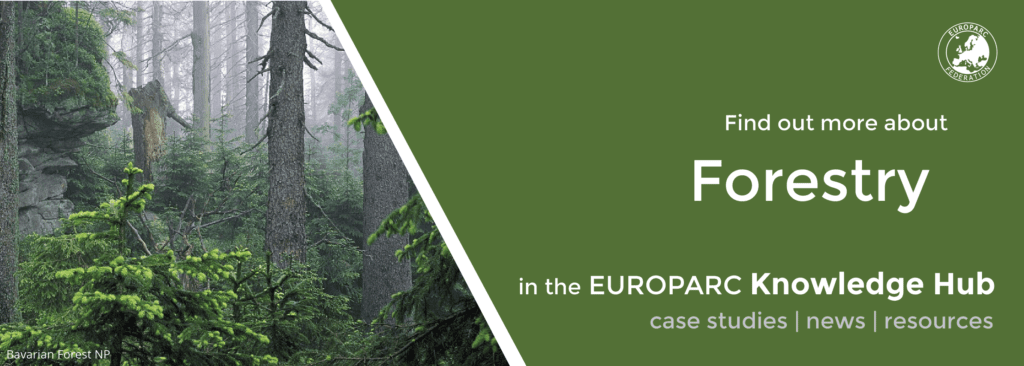Postponed: Charter Network Meeting & Star Awards
Due to the uncertainties still posed by the coronavirus pandemic, we had to cancel our meeting in Sabugal, Portugal and postpone the 2021 Star Awards.
Twenty years ago, a group of Protected Areas and tourism professionals came together to create a new way of working, that would seek to build sustainable destinations, that were Good for Nature and Good for People. This was the beginning of the Charter for Sustainable Tourism in Protected Areas, now with 107 destinations in 15 countries.
We had hoped that we could welcome our network – albeit with restrictions – during the ECST Network Meeting in Sabugal from the 14th till 16th of September to celebrate this joyous occasion. However, due to developments of the coronavirus, we have decided to cancel the meeting. It is with a heavy heart, but we know canceling is the wisest thing to do in these uncertain times. Nonetheless, we will be sure to offer you further opportunities for exciting exchanges, either online or face to face, when the situation becomes more secure. Besides, who says that we cannot celebrate our 20 Years Anniversary a year later? 🙂
Additionally, the Star Awards will have to be postponed to better times as well. Unfortunately, we did not receive the number of candidates we were expecting. Of course, we fully understand that this is not the best time to apply for an award, but do stay tuned as we will provide other opportunities to showcase the sustainability of your area and business!
New EU Forest Strategy for 2030
PN Puebla de San Miguel Spain
The European Commission released the Communication for the New EU Forest Strategy 2030. It is part of the “Fit for 55 Package” which falls under the European Green Deal.
New EU Forest Strategy for 2030
Last Friday (16-07-2021), the European Commission released the Communication for the New EU Forest Strategy 2030. This strategy is part of the “Fit for 55 Package”, which aims to reduce the greenhouse gas emissions of 1990 with 55% by 2030. This package is in turn a presentation of the reduction targets following the revisions and initiatives of the European Green Deal. In other words, it contains the practical actions the European Commission wants to take to move towards a climate-neutral Europe. The “Fit for 55 Package” will be discussed by the European Parliament and Member States in the upcoming months and it will have to be approved.
The Forest Strategy acknowledges the importance of large, healthy, and more diverse forests for carbon storage and sequestration, reduction of the effects of air pollution on human health and halting loss of habitats and species.
The Forest Strategy acknowledges the importance of large, healthy, and more diverse forests for carbon storage and sequestration, reduction of the effects of air pollution on human health and halting loss of habitats and species. This will allow the forests to provide livelihood and boost socio-economic benefits. The Forest Strategy does not only safeguard the natural habitats but also encourages cutting down forests – albeit sustainably.
These high ambitions are part of the EU’s effort to be a leading figure on the climate agenda and the European Commission’s aims to work closely with global partners to work towards forest protection and sustainable forest management.
EUROPARC expects that in the implementation of this strategy, sufficient attention will be paid to the important role forests play for biodiversity, wildlife, and climate change mitigation and adaptation. It welcomes the development of sustainable economic opportunities for local authorities, although this should be done with caution.
Bio-based economy boost
A big part of the Strategy is the forest bio-based economy boost, which aims to produce sustainable wood and non-wood materials, which includes eco-tourism. According to the Strategy, sustainably-produced and long-lived wood-based products can help achieving climate neutrality by storing carbon and substituting fossil-based materials. The role of wood products will turn the construction sector from a source of greenhouse gasses to a carbon sink.
Another bio-economic benefit the Forest Strategy has set its arrows on is the use of biofuels, where no effective wood material utilisation is possible. Biofuel is a hot topic amongst conservationists because it involves cutting down trees. However, it is positive to note that to ensure nature protection purposes are not limited, the biomass for this purpose is prohibited in primary forests, and the use of whole trees is to be minimised.
Management practices and skills training
The EU Biodiversity Strategy for 2030 has the ambitious goal to protect 30% of the land area, of which 10% will be strictly protected. The Forest Strategy outlines that all primary and old growth forests should be part of this 10%. However, the definition of these forests is not set yet, nor are the locations of these forests mapped. Forest management that preserves biodiversity and ensures resilient ecosystems is one of the key values of the Strategy. In terms of management practices, the Strategy wants to enforce resilient forests that can deliver their environmental and socio-economic functions. This contains management practices such as uneven-aged and continuous-cover forestry, enough deadwood, regulation of wildlife densities and the establishment of protected habitat patches. Together with the Member States and different forest stakeholders, the European Commission will develop Guidelines on closer-to-nature forestry and a closer-to-nature voluntary certification scheme, so the most biodiversity-friendly management practices benefit from an EU quality label. Another part of the strategy is re- and afforestation and includes the planting of 3 billion additional trees by 2030.
As part of the implementation of the EU Biodiversity Strategy for 2030, the Commission will propose a legally binding instrument for ecosystem restoration at the end of 2021. This will include forest ecosystems, and also others with high potential to capture and store carbon and to prevent and reduce the impact of natural disasters. Furthermore, the European Commission will encourage all forest stakeholders to join the Pact for Skills to improve the managemental skillset of the stakeholders. Member States can use the European Social Fund Plus (ESF+) to equip people with these skills or enhance employment and entrepreneurship. Financial incentives will be developed, particularly for private forest owners and managers, to provide these ecosystem services.
Other focal points of the Forest Strategy include an improvement of the now insufficient monitoring practices and a proposal for research and innovation partnership on forestry. The forest governance framework is updated in a way that promotes policy coherence and synergies between actors. This also includes bringing together the Standing Forestry Committee and the Working Group on Forest and Nature. The European Commission additionally aims for better synergies with the Expert Group on Forest-based Industries Sector-related Issues. Apart from this, Member States are encouraged to establish multi-stakeholder dialogue platforms. Lastly, implementation and enforcement of existing European rules and regulations are improved, especially to halt illegal logging.
EUROPARC expects that in the implementation of this strategy, sufficient attention will be paid to the important role forests play for biodiversity, wildlife, and climate change mitigation and adaptation.
Implementation withing Green Deal framework
All in all, the forest strategy acknowledges the importance of forests for preserving biodiversity and mitigating climate change. At the same time, it promotes the sustainable exploitation of wood and-non wood products, whilst setting up a framework to communicate with the Member States, forest managers and other stakeholders.
According to EUROPARC, the biodiversity of the forests and delivery of ecosystem services should remain a priority in Protected Area management: economical activities managed by local communities can be welcomed in Protected Areas but must be agreed and implemented in partnership with Protected areas’ authorities.
The Member States are encouraged to set up payment schemes for forest managers, as well as to boost carbon farming practices. EUROPARC underlines the importance of Member States adhering to the objectives set in the Biodiversity Strategy, and that the European Commission controls and guarantees the consistency of the national implementation with the EU Green Deal framework.
Read about the strategy here, or read the full strategy here.
Click here to read the Management Recommendations and FAQs of LIFE Red Bosques, a project that aims to improve the management of Spanish Mediterranean forests included in the Natura 2000 network. They have released these documents prior the release of the EU Forest Strategy for 2030 and underline the importance of protecting the biodiversity of Mature Forests.
New members, welcome! Who joined us in the first half of 2021?
Ⓒ Municipality of Lousada
Over the first half year of 2021, 6 members from 4 countries joined the EUROPARC Network and we would like to officially introduce them with a warm WELCOME!
Tere tulemast, Benvenuti, Velkommen, Bem-vindos!
We are excited to welcome and briefly present our new members to the rest of the network. They are coming from:
ESTONIA
Aivar Ruukel (individual member)
Mr. Aivar Ruukel has been guiding visitors in the Soomaa National Park since 1993, promoting values of the park and sense of the place as a local private tourism service provider. Since 1996, he has also been involved in organizing workshops on building local traditional dugout boats (haabjas). Currently, Mr. Ruukel works on applying this cultural value of Soomaa NP into the heritage list of UNESCO.
NORWAY
Raet National Park
The Raet National Park is mainly a marine park that also includes important geological formations and cultural landscapes such as heath, meadows and forests. It is the local recreational area for many thousands of local habitants and also many tourists. Lately, the Park has seen an increasing amount of organized activities such as guided tours and water-sports. For more information about the Park and its various activities, check their website!

Grimstad, Raet National Park ©Tore Moi
ITALY
Regional Natural Park Ligurian Alps
Established in 2007, the Regional Natural Park of the Ligurian Alps covers about 6000 hectares in the hinterland of western Liguria, in the Province of Imperia on the border with France and Piedmont. The Protected Area includes parts of 7 municipalities: Cosio d’Arroscia, Mendatica, Montegrosso Pian Latte, Rezzo, Triora, Pigna and Rocchetta Nervina.
Among the Park’s most interesting sites are the Saccarello mountain (2,200 m), the highest peak in Liguria, the Riserva-Foresta Demaniale di Testa d’Alpe, the woodland of Rezzo, and the Toraggio-Pietravecchia mountain range. The local environment is home to almost 3,000 plant species, including some very rare ones even at the world level, and very rich fauna. Historical and artistic testimonies can be seen and visited in the historic villages and on the paths. Centuries ago, important local artistic families frescoed and decorated churches, chapels and sanctuaries, carved portals and erected stone monuments.
CURSA (University Consortium for Socioeconomic Research and the Environment)
CURSA engages in many activities, including study, research, education and training in the area of environment, energy and pollution mitigation tools. Their activities also include various programs, projects and innovative actions in the fields of environmental sciences, energy and environmental policies, socio-economic disciplines, the assessment of sustainability and efficiency of governance actions of local authorities.
The Consortium also carries out support actions to public decision makers and stakeholders in orienting and evaluating policies and tools for the defense and conservation of biodiversity. It has promoted and implemented numerous studies on national parks, marine protected areas and UNESCO MAB areas and has promoted project actions in support of agricultural entrepreneurs, consumers, and public decision-makers.
PORTUGAL
Municipality of Lousada
Promoting environmental protection measures through environmental awareness and the valuation of green spaces is one of main goals of the Municipality of Lousada. Their actions illustrate the powerful role environmental education plays in promoting environmental practices, supporting the creation of conservation areas and environmental job opportunities, as well as reconnecting local citizens with their rural landscape.

Ⓒ Municipality of Lousada
Since 2015, the Municipality of Lousada has implemented an innovative sustainability agenda, integrating all types of stakeholders in active citizenship like private companies, parishes, schools and NGOs. With a number of local projects, the educative system shifted towards promoting environmental awareness and action. The territory protects priority areas for nature conservation, controls invasive species and restores degraded areas. So far, over 40 hectares of degraded land has been converted to nature conservation areas and over 65.000 native trees were planted.
Association of Municipalities Parque das Serras do Porto
The Regional Protected Landscape Park das Serras do Porto assumes a strategic position in the Porto Metropolitan Area, as a refuge for biodiversity and a provider of important ecosystem services. It covers close to 6000 hectares, in a sequence of 6 hills, crossed by the valleys of the rivers Ferreira and Sousa. It includes the Special Area of Conservation ‘Valongo’, which is part of the Natura 2000.
The area is famous for its patrimonial values and geological history – including for example the archaeological remains of the largest underground gold mining complex of the Roman Empire. In fauna, the Golden-striped Salamander is particularly remarkable, as it finds in the ancient Roman mines excellent places for its reproduction and metamorphosis. At the same time, the territory is home to rare populations of ferns, typical forests of the Atlantic region and extensive heaths. Agricultural practice is observed around the villages and due to the proximity to large urban centres, it is an area widely used for sport and recreation. It can be characterised as a periurban park, combining conservation with sustainable use and significant civic engagement.
Modelling Landscape Perceptions in European Protected Areas – Marie Micol
Die Landschaft von Marie Micol
Every year, the Alfred Toepfer Natural Heritage Scholarship supports the work of young conservationists in Protected Areas across Europe. Marie Micol was one of the winners of the Scholarship in 2019 and traveled across France and Italy in 2020. The following article is written by Marie.
Pour lire cet article en français, cliquez ici.
Per consultare questo articolo in lingua italiana, clicca qui.
Für die deutsche Version dieses Artikels, kicken Sie hier.
The premise
Landscapes are fascinating. They mean so much to all of us, yet from one person to the next the definition and description of a landscape can vary greatly. For some people, a landscape will be everything natural and human interacting to shape the land and with that the culture of people who live there. For others, a landscape will only exist where there is minimal human impact, and landscapes must therefore be ‘beautiful’, ‘pristine’ (which in itself is very subjective). For some, a landscape will be something that is seen from a viewpoint, whilst for others it is something that is felt, individually and / or collectively.
Are any of those perceptions more valid than others? When I started this study, I thought the ‘right’ way to approach landscapes and to manage them was through an integrated lens: landscapes for me were everything there is and was and will be. ‘My’ landscape was a blend of childhood memories in the deep forests, roaring economic activity down in the valley, and everything in between. I thought if everyone saw it like me, we could manage it better. My goal was to find a way to make that happen.
With this study I was therefore hoping to find out what lies behind protected area staff perceptions of landscapes and landscape approaches, in order to come up with a framework – a standard way for protected areas across Europe to apply an integrated, holistic management approach to their precious landscapes.
The study was supposed to bring me on a journey across four countries in Europe to uncover landscape perceptions. The global situation from 2020 onward meant that I only got to visit one country (Italy) besides my home country (France), but
this piece of work has nonetheless been for me a metaphorical journey: a journey of questioning and learning, of feeling inspired by you people who care for those special places we call ‘protected landscapes’.
This study is not a review of existing landscape approaches nor a review of theoretical models. The data I collected is a sample, resolutely practical, of what people in protected areas think about landscapes. It is asking important questions to those people who are in the position to shape the future of our most cherished landscapes in Europe. It is an invitation to pause and reflect on what we manage and care for.
The study
With carefully crafted interviews, with 19 people in 7 different protected areas across France, Italy, Germany, and the United Kingdom, as well as a short online survey to over 40 people, I set out to uncover what landscapes were really all about. I found that there are as many landscapes as there are people. Each individual perception is a blend of many factors interplaying differently from one person to the next: what we like and care about, what we have lived, our aspirations for the future, our knowledge of a place (its history, its biology, its geology, etc.), our knowledge and appreciation of other places outside of it, and importantly our philosophical view on where humans fit in all of this!
What would become of my idea of a standardised framework to approach landscapes? I moved away from this initial goal and instead realised that the exercise I had conducted could be the basis for a methodology to enable protected area teams (and their partners) to ‘have the conversation’.
Indeed, what I found is that people working in protected areas rarely get opportunities and time to stop and reflect on the bigger picture. Yet I feel this is hugely important in order for us to be able to tackle the enormous challenges we face (climate change, biodiversity loss, inequality of access to green spaces, and many others, …).
Landscape is indeed a concept which is intimately linked with the way we manage those places we cherish, today and for the future. Making these places resilient, accessible without harming them, is a key consideration when it comes to landscapes.

Pembrokeshire Coast, one of the areas visited
‘Have the conversation’ thus means first with yourself, to reflect and sometimes to even realise what landscape means for you. Importantly however, we need to have that conversation collectively. Indeed, I have found through this research that perceptions of landscapes vary enormously even within teams of protected area staff working closely together. They are not in contradiction, but they are different and call for different approaches to managing those places. To enhance local delivery, I therefore believe it is vital to enable this conversation within protected areas teams and with their close partners.
We can only solve the complex challenges we face if we understand each other’s perceptions of landscapes and behind that, the reasons why we do the work we do.
This study has therefore brought me to develop a methodology to enable protected area teams to uncover variations in landscape perceptions, and what it means for their protected area management. My goal now is to refine this methodology and make it more consistent so that I can use it to empower protected landscapes across Europe to have these important conversations. There are as many landscapes as there are people and their strength comes from the fact that they come together to care for those landscapes and to bring a common vision forward.
Protected areas are only as strong as the people who work to protect them.
This is not an academic paper. It is a think piece asking big questions. It is a eulogy to protected landscapes and the power they hold within them, to show the sustainable way forward and set the bar high. Ultimately, it is also a plea to resource them better, to believe in their potential and to enable them to fulfill what they were designed for: to bring people together, connect them to nature, and sustain livable places.

